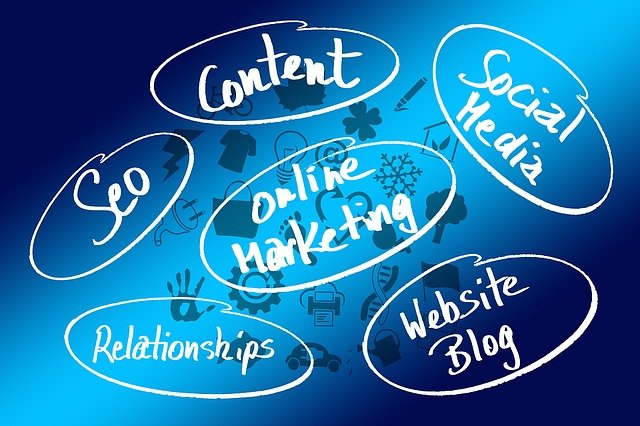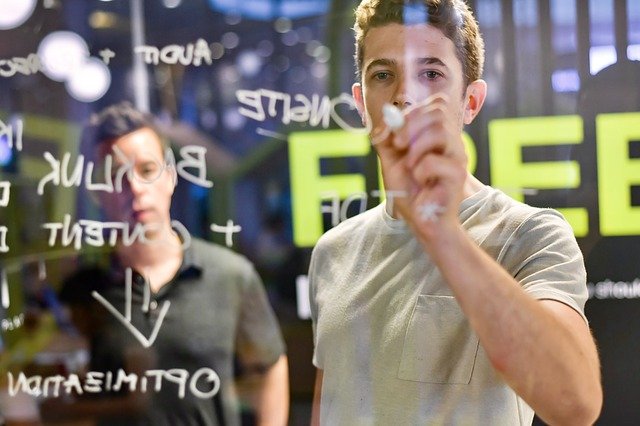Or try one of the following: 詹姆斯.com, adult swim, Afterdawn, Ajaxian, Andy Budd, Ask a Ninja, AtomEnabled.org, BBC News, BBC Arabic, BBC China, BBC Russia, Brent Simmons, Channel Frederator, CNN, Digg, Diggnation, Flickr, Google News, Google Video, Harvard Law, Hebrew Language, InfoWorld, iTunes, Japanese Language, Korean Language, mir.aculo.us, Movie Trailers, Newspond, Nick Bradbury, OK/Cancel, OS News, Phil Ringnalda, Photoshop Videocast, reddit, Romanian Language, Russian Language, Ryan Parman, Traditional Chinese Language, Technorati, Tim Bray, TUAW, TVgasm, UNEASYsilence, Web 2.0 Show, Windows Vista Blog, XKCD, Yahoo! News, You Tube, Zeldman
Firdosh Khan
Higher Education Marketing & PRRanking in the Voice Era: A Guide for Education Marketers 7 May 2025, 6:34 am
Voice search is conversational, emotional, and context-rich. Gone are the days of optimizing web pages for rigid keyword strings. Today, it’s about answering full, nuanced questions in natural language—questions that reflect curiosity, anxiety, and aspiration.

The way prospective students search for colleges is changing rapidly. With the growing adoption of voice-enabled assistants like Siri, Alexa, and Google Assistant, Gen Z is moving away from traditional search habits.
In fact, according to a 2024 report by Statista, over 71% of Gen Z users in urban areas use voice search at least once daily, and 43% rely on it for discovering education-related content. This marks a profound shift in how colleges must shape their education marketing strategy.
Voice search is conversational, emotional, and context-rich. Gone are the days of optimizing web pages for rigid keyword strings. Today, it’s about answering full, nuanced questions in natural language—questions that reflect curiosity, anxiety, and aspiration.
Colleges and universities that adapt their higher education digital marketing to accommodate voice search will not only improve visibility but also deepen emotional resonance with their audience. This is not just a trend in SEO for higher education. It’s a revolution.
This article explores the uncharted territory of voice search optimization through the lens of education marketing. We go beyond the basics to uncover unique approaches that align perfectly with the way Gen Z searches, thinks, and feels.
Hey Siri, Which College Has the Best Campus Life?
Voice search is personal. Unlike typed queries, voice queries are often emotionally driven. Students aren’t just asking for “top engineering colleges in India” anymore.

They’re saying, “Which college in Delhi feels safe and friendly for girls?” or “What are fun colleges near Bangalore with great food options?” This shift requires an emotional intelligence layer in your education marketing strategies.
Google’s 2024 “Search Trends and the Youth” report found that queries containing emotional terms like “fun,” “safe,” “stress-free,” and “inclusive” have risen by 34% in education-related searches.
This signals a need to embed sentiment-rich language into page content, meta descriptions, and even schema markup. SEO for higher education is no longer just about showcasing academic credentials; it’s about narrating the experience.
A compelling case is how Shiv Nadar University revamped its admissions microsite in 2024 by embedding student stories that answered real, voice-based queries.
Questions like “What’s it like living in the hostel?” were addressed through video content and rich text, increasing their organic traffic from voice-enabled devices by 28% in just five months.
This is where marketing in education industry must intersect with empathy. Crafting content that echoes the unspoken concerns and desires of students—especially for voice search—is no longer optional. It’s a foundational pillar of a modern education marketing strategy.
Hyper-Granular Neighborhood Data Can Boost Campus Discoverability
Location-based voice searches have seen a surge, especially in higher education marketing. With over 56% of Gen Z students relying on voice assistants for local search tasks (Think with Google, March 2024), institutions must rethink their geographical SEO approach.

Students aren’t just asking “Colleges near me” anymore. They’re more specific, using queries like, “Which MBA college near Andheri has a metro station and food joints nearby?” or “University near me with quiet parks and coffee shops.”
These queries are layered with intent and lifestyle preferences. Traditional location keywords don’t address these nuances.
One forward-thinking example is Christ University in Bangalore. In 2024, it optimized its campus-specific landing pages by incorporating micro-location insights: proximity to transport, health centers, cafés, and even noise levels.
They integrated structured data to reflect local attractions and safety stats—helping them rank for voice queries like “safe college near Koramangala for girls.”
Incorporating local lifestyle data into your educational marketing strategy can be a game-changer. Education and marketing must join forces to research neighborhood traits, analyze student lifestyle demands, and update content accordingly.
This level of hyper-local optimization isn’t just smart SEO for higher education; it’s what Gen Z expects from the institutions they trust.
Long-Tail Is Dead. Conversational SEO Is In
For years, education marketing strategies have leaned heavily on long-tail keywords. But voice search has disrupted this model. Today, it’s about question clusters—related phrases that form natural-sounding conversations.

Students no longer search using phrases like “affordable engineering college Mumbai.” They ask, “Which colleges in Mumbai offer affordable engineering programs with good placements and hostel facilities?”
It’s not a keyword string—it’s a voice-based narrative. If your website only ranks for the core long-tail phrase, you’re missing the traffic pie.
In 2024, Symbiosis International University adopted a query cluster approach. They studied real student voice recordings, mapped top conversational questions, and rebuilt their content structure to answer these with semantic layering.
By using tools like Google’s People Also Ask and Answer the Public, they developed content that mirrored Gen Z’s exact queries.
This narrative style optimization has proven effective. According to SEMrush’s 2024 Higher Ed SEO Insights, pages with query-cluster optimization experienced a 35% higher voice snippet selection rate.
For marketers in education, it signals a shift: we must stop thinking in keywords and start thinking in conversations. That’s what voice SEO demands, and it’s how educational marketing will thrive in the next decade.
Colleges Can Get Picked as Google’s Spoken Answer
With the rise of AI assistants and smart speakers, more searches end in a single spoken answer rather than a click. These “zero-click responses” dominate voice search. Google selects one concise, authoritative snippet—and if it’s not yours, you’re invisible in that moment.

To get picked as the featured answer, content needs to be structured for voice. Short, clear, and information-rich paragraphs, preferably within 40-50 words, increase the likelihood of being selected. Schema.org markup, FAQ sections, and AI-enhanced metadata are non-negotiables.
An inspiring use case is OP Jindal Global University, which updated their law program pages in 2024 to feature voice-optimized, schema-tagged FAQs.
Questions like “What are the eligibility criteria for Jindal Law School?” were answered in crisp, contextual summaries. Within three months, their content was consistently picked as the voice snippet on Google Assistant for five high-volume queries.
The game is no longer about ranking on the first page. In the marketing for education ecosystem, the winner is whoever gets spoken out loud.
This changes how educational marketing teams write copy, structure information, and tag content. And with voice SEO, that spoken word has the power to shape perception, reputation, and conversion.
Why Hinglish, Taglish, and Regional Vernaculars Matter
India is linguistically diverse, and Gen Z embraces this in their voice queries. According to the 2024 ShareChat Digital India report, over 49% of Gen Z students use hybrid language voice queries (like Hinglish) while researching college options. Yet most colleges still optimize content in formal English.

This creates a language disconnect. When a student asks, “Best BCom college Bangalore mein jahan placements bhi ache ho,” the SEO engine often fails to match the hybrid intent. That’s a missed opportunity.
Institutions like Ashoka University and Manipal University are beginning to test multilingual SEO strategies, using localized keywords and even transliterated meta tags.
In 2024, Ashoka experimented with vernacular voice SEO on regional landing pages, and reported a 24% rise in voice assistant-led traffic from tier 2 cities.
Higher education digital marketing must embrace hybrid dialects and optimize for them. That means adjusting titles, FAQs, and alt texts for regional relevance, training chatbots in vernacular, and monitoring tools like Google’s Multilingual Search Console Insights.
Marketing in education industry is ultimately about inclusivity, and nothing says inclusive like being understood in the language students naturally use.
Measuring ROI from Voice Search Traffic in an Attribution-Starved Funnel
Voice search doesn’t always leave a visible click trail. This makes traditional analytics tools ineffective for tracking ROI.

Yet, in 2024, education brands like NMIMS and Amity began investing in voice SEO—not because it’s easy to measure, but because it’s essential to compete.
Instead of chasing last-click attribution, these institutions started tracking voice-influenced behavior using proxy metrics: spikes in branded search volume, direct traffic from smart speaker geographies, increased voice-activated device sessions, and post-query chatbot engagement.
According to a 2024 Adobe Digital Education Index, institutions that added voice-optimized content saw a 19% higher lead-to-inquiry conversion rate.
Understanding the ROI of educational marketing in the voice era requires rethinking attribution. The path from voice search to campus visit is invisible but real.
Combining behavioral data with qualitative research (like digital ethnography or sentiment mapping) can uncover patterns missed by GA4 dashboards.
Conclusion
The SEO revolution in higher education is not coming. It’s already here, whispered into smart speakers and murmured into phones across India and the globe.
Colleges that fail to adapt to voice-first behaviors will find themselves sidelined in a highly competitive digital landscape.
The new rules of educational marketing require conversational intelligence, emotional resonance, regional authenticity, and tech-enabled clarity.
This transformation isn’t just technical; it’s cultural. Students today expect institutions to meet them where they are—not just physically, but linguistically and emotionally.
The winners in this revolution will be those who redefine what seo for higher education truly means: a living, breathing bridge between curiosity and connection.
So ask yourself!
In a world where Gen Z prefers to speak rather than type, is your college ready to be the answer they hear?
The post Ranking in the Voice Era: A Guide for Education Marketers appeared first on Firdosh Khan.
Top 10 University Marketing Strategies That Actually Drive Enrollment 1 May 2025, 7:48 am
Whether you’re a higher education marketing agency, an in-house education marketing team, or an EdTech provider, the answer lies in strategies that fuse branding, SEO, and inbound methodology.

In today’s hyper-competitive education landscape, simply having a great program isn’t enough.
Universities and colleges are battling not just for attention, but for action—from a generation raised on short-form content, personalized experiences, and high expectations.
Institutions that cling to outdated marketing models risk falling behind. The real challenge?
Converting interest into enrollment.
So, how can universities stand out, stay relevant, and scale admissions in both B2C and B2B segments?
Whether you’re a higher education marketing agency, an in-house education marketing team, or an EdTech provider, the answer lies in strategies that fuse branding, SEO, and inbound methodology.
Ready to dive in?
1. Hyper-Personalized Campaigns Using CRM & AI
AI-driven CRMs like HubSpot or Salesforce Education Cloud allow institutions to segment and tailor content by interest, geography, and behavior. According to Salesforce, personalization increases engagement by 26%. Personalization isn’t just smart—it’s expected. Higher education marketing strategies must evolve beyond static messaging to create dynamic, one-on-one experiences that nurture prospective students across multiple touchpoints.
2. SEO-Optimized Program Pages That Rank and Convert
Most students begin their journey on Google. Yet, many university websites still have bloated pages with poor SEO. Clean URLs, schema markup, mobile optimization, and keyword-targeted content can boost visibility. A study by Backlinko found that the top organic result is 10x more likely to be clicked than the 10th. Invest in SEO for higher education—it’s your silent admissions officer.
3. Thought Leadership via Faculty-Driven Content Marketing
Students and parents trust universities with credibility. Leverage your faculty’s expertise to create insightful blogs, whitepapers, or YouTube explainers. This isn’t just educational content marketing—it’s brand trust-building at scale. Publishing expert-backed insights also enhances visibility in academic and professional networks, supporting both B2C and B2B lead pipelines.
4. Influencer Marketing with Micro-Campus Ambassadors
According to Nielsen, 92% of consumers trust peer recommendations over branded content. Empower current students as nano- and micro-influencers on platforms like Instagram and TikTok. A day-in-the-life reel or honest “Why I chose XYZ University” post can outperform polished ads. This grassroots, authentic approach builds emotional resonance and boosts peer-driven marketing in education.
5. Programmatic Ads for Hyper-Targeted Outreach
Using platforms like Meta or Google Display Network, universities can run digital marketing strategies for higher education that reach specific audiences based on behavior, location, and education level. Programmatic ads reduce cost per lead while increasing precision. For B2B EdTech firms and education marketing companies, it offers scalable targeting for decision-makers in institutions.
6. Lead Nurturing Through Email Workflows and SMS
Enrollment doesn’t happen overnight. Students explore, compare, and delay. Build education marketing plans with drip campaigns offering value at every step—application tips, alumni testimonials, campus updates. SMS open rates are as high as 98%, compared to 20% for email. Use both channels together to boost responsiveness.
7. Incorporate Live Chat & Chatbots on Key Pages
Speed matters. According to Drift, 55% of consumers expect responses within 10 minutes. Integrate AI chatbots on admissions and program pages to answer FAQs, collect leads, and guide users in real-time. This isn’t a gimmick—it’s conversion infrastructure. Think of it as inbound marketing for higher education on autopilot.
8. Leverage Alumni for Social Proof and Career Outcomes
Highlight successful alumni stories on your homepage, social media, and ads. Tools like GradLeaders or LinkedIn Alumni Insights help track career trajectories. Today’s students are ROI-driven. Showcasing outcomes drives credibility, strengthens emotional connection, and improves conversions—particularly for high-investment postgraduate or international programs.
9. Optimize for Voice Search and Zero-Click Results
“Best business school in Europe” or “MBA with scholarship” are now searched by voice. Use long-tail keywords, featured snippets, and FAQ schema to claim zero-click visibility. With 50% of users using voice search daily (PwC), adapting your higher education marketing strategy for how people speak, not just type, is a competitive advantage.
10. Partner with a Higher Education Digital Marketing Agency
You can’t do it all alone. A higher education digital marketing agency brings specialized SEO, media buying, analytics, and content expertise. They act as a strategic growth partner—especially for scaling outreach in global markets or testing multilingual campaigns. Choose one that understands student psychology and platform shifts.
To Conclude
University marketing is no longer about brochures and banner ads. It’s a tech-enabled, data-driven ecosystem where personalization, trust, and digital visibility define success.
Whether you’re a university, EdTech brand, or SaaS provider, the strategies above aren’t just trends—they’re essentials. As competition intensifies, will your marketing team evolve or stay behind?
Which of these strategies will you implement first—and which one are you already seeing results from?
Let us know in the comments or reach out to share your wins.
The post Top 10 University Marketing Strategies That Actually Drive Enrollment appeared first on Firdosh Khan.
Why Ethical Storytelling Should Be the Future of Education Marketing 30 Apr 2025, 12:07 am
Ethical storytelling has emerged as a crucial differentiator in education marketing, bridging the widening gap between institutional ambition and audience trust.

In an era defined by hyper connectivity, information overload, and audience skepticism, the education sector is undergoing a seismic shift in how it communicates.
Students, parents, and stakeholders no longer respond to polished promises or transactional value propositions. What resonates today is authenticity—not just the story, but the ethics behind the story.
Ethical storytelling has emerged as a crucial differentiator in education marketing, bridging the widening gap between institutional ambition and audience trust.
The growing influence of Gen Z and Gen Alpha, cohorts known for their values-driven decision-making, demands a rethinking of the traditional education marketing strategy.
These digital natives expect brands—including educational institutions—to reflect transparency, inclusion, and social responsibility. A compelling story without ethical grounding can do more harm than good, risking backlash and reputational damage.
From SEO for higher education to long-term brand equity, ethical storytelling isn’t just a moral imperative; it’s a strategic necessity. It reinforces credibility, fosters trust, and nurtures lifelong relationships with learners.
As higher education digital marketing continues to evolve, the institutions that embrace ethical storytelling will lead not by impression volume but by the depth of their impact.
From Enrolment Traps to Empowerment Narratives
Traditional education marketing strategies often center around enrollment numbers and conversion rates. While metrics matter, the stories being told in pursuit of those goals have often leaned toward idealism, focusing solely on aspirational outcomes.

These narratives may boost short-term interest but frequently overlook the complexity and reality of a student’s academic and personal journey.
In contrast, ethical storytelling prioritizes empowerment over persuasion. It offers prospective students a real window into the challenges, growth, and transformation that define a meaningful education experience.
A 2024 report by Salesforce Education Cloud found that 78% of students prefer institutions that showcase “real, relatable student journeys” rather than polished success stories alone. This indicates a rising preference for narratives that don’t just sell, but serve.
Marketing in education industry must evolve to reflect this shift. Institutions should highlight resilience, failure, self-discovery, and the broader life lessons that accompany academic progress. When stories acknowledge uncertainty and struggle, they become more human and more powerful.
By replacing enrolment traps with empowerment narratives, educational marketing builds trust and aligns with values of transparency and honesty.
These values are not just ethical choices—they are becoming critical components of any education marketing strategy that seeks sustainable growth. This transformation from transactional to transformational storytelling is a key evolution in both education and marketing practices.
Beyond Diversity Metrics in Education Marketing
The push for diversity in education marketing is long overdue, but how that diversity is represented often lacks depth. Featuring diverse faces in a brochure or website isn’t enough.

Ethical storytelling goes further by honoring the lived experiences of students, rather than reducing them to visual tokens of inclusion.
According to the QS International Student Survey 2024, 67% of international students cited “authentic representation of student communities” as a deciding factor when selecting an institution. Yet, too many campaigns fall into the trap of performative diversity, where identity is showcased without context, voice, or nuance.
Marketing for education must move beyond diversity metrics and elevate stories that explore intersectionality, cultural challenges, and personal triumphs. By doing so, institutions acknowledge not only who their students are but how those identities shape their educational experiences.
In 2024, the University of Cape Town launched a campaign rooted in student co-creation, where minority and first-generation students produced video diaries documenting their real struggles and support systems. The campaign boosted engagement by 43% and received praise for its candor and depth.
Such storytelling doesn’t just improve brand perception—it influences policy, culture, and prospective student trust. It also enhances SEO for higher education websites, as rich, human-first content drives higher dwell time and authentic backlinks.
Ultimately, ethical educational marketing strategies must give space to underrepresented voices, not as case studies but as co-authors of the institutional narrative. This shift reflects a broader maturity in both education and marketing, emphasizing empathy, representation, and truth.
Are We Telling Stories Students Never Agreed to Share?
One of the least discussed yet most critical aspects of education marketing is the ethics of consent. While it’s common for institutions to use student testimonials, photographs, and success stories in promotional material, the lines around consent can often be blurry.

A 2024 survey conducted by EDUCAUSE revealed that 52% of students were unaware that their stories or images were being used in institutional marketing.
This raises urgent questions around privacy, agency, and transparency. Ethical storytelling must begin with informed, voluntary, and ongoing consent. Anything less risks exploiting student identities for institutional gain.
Higher education marketing teams must implement standardized consent processes that go beyond one-time signature forms. Students should have editorial input, approval rights, and the option to withdraw consent. This not only protects student rights but also enhances the credibility of marketing materials.
Consider the case of a Canadian liberal arts college in 2024 that introduced a “Story Partner Protocol,” where students who shared testimonials were involved in scriptwriting, visual editing, and campaign rollouts.
The initiative not only reduced legal risk but significantly improved campaign authenticity, resulting in a 35% increase in engagement and a 27% boost in conversion from digital campaigns.
Education marketing strategy today must prioritize consent as a cornerstone of storytelling. In an age where marketing in education industry intersects deeply with personal identity, ethical considerations are non-negotiable. Trust is fragile, and it begins with respect—especially when the story isn’t ours to tell.
Collective Voices Matter in Education Marketing
Higher education digital marketing has long been captivated by the “one hero” trope—the singular student or faculty member whose journey encapsulates institutional excellence.

While compelling, this narrative model often silences the broader community story, creating a narrow lens on what success looks like in academic spaces.
In 2024, data from the Inside Higher Ed Marketing Benchmarks Study showed that campaigns focusing on group stories and collaborative achievements yielded 2.4x more engagement than those centered on individual spotlights. This reflects a growing audience appetite for communal narratives, where success is shared, multifaceted, and inclusive.
Educational marketing thrives when it mirrors the ecosystem it represents. Co-curricular clubs, academic peer networks, research collaborations, and alumni communities all offer powerful storytelling opportunities.
When institutions shift the spotlight from individual to collective voices, they showcase the diversity of paths and outcomes that define their academic landscape.
A prominent engineering university in Singapore revamped its content strategy in early 2024 to focus on student cohorts rather than single achievers.
They shared multi-perspective stories of a robotics team navigating failures and wins together. The result: a 63% increase in social shares and a 21% rise in applications to their tech programs.
This shift not only enriches storytelling but strengthens community engagement and internal culture. Marketing for education must evolve beyond linear success stories to more plural, layered narratives. In doing so, education and marketing align around a shared truth: it takes a village to learn, grow, and succeed.
The Fine Line Between Inspiration and Exploitation
Education marketing has increasingly embraced emotional storytelling to highlight the transformational power of learning. But when stories of hardship are repackaged for virality, institutions risk crossing into exploitation. There is a fine line between celebrating resilience and commodifying adversity.

Impact campaigns often rely on dramatic before-and-after arcs, especially when spotlighting students from marginalized backgrounds. Yet, such narratives can strip subjects of their complexity and agency.
A 2024 Ethics in Educational Communication Report by the European Association for Education Marketing found that 61% of students from low-income backgrounds felt “uncomfortable” or “objectified” by how their stories were used.
An example of ethical reform came from a Brazilian business school in 2024, which redesigned its marketing approach after facing backlash for portraying a scholarship student’s poverty in excessively dramatic terms.
The revised campaign, created in collaboration with the student, highlighted institutional support structures, academic milestones, and personal agency, without overemphasizing economic hardship. Applications to their scholarship program increased by 47%, driven by what one applicant called “respectful honesty.”
The lesson is clear: inspiration shouldn’t come at the cost of dignity. Marketing in education industry must resist the urge to amplify pain for persuasion. Instead, focus on systemic support, mentorship, and resilience without romanticizing struggle.
When higher education marketing respects context and tone, storytelling not only uplifts but also invites critical reflection. This approach builds long-term trust, enhances SEO for higher education content, and positions institutions as ethically responsible voices in a competitive landscape.
Ethical Storytelling as a Long-Term Brand Strategy
As competition intensifies in the education space, marketing teams are increasingly under pressure to stand out. But differentiation cannot rely on gimmicks or buzzwords alone. Ethical storytelling offers a long-term education marketing strategy grounded in values, not vanity.

Trust-driven content performs better across digital channels. According to the 2024 HubSpot State of Content Marketing report, authentic storytelling leads to a 42% increase in content sharing and a 31% improvement in lead quality. These aren’t just engagement metrics; they are proof points for the strategic value of integrity.
Ethical storytelling also supports technical aspects of higher education digital marketing. Google’s 2024 Helpful Content Update prioritizes people-first, experience-based narratives that demonstrate E-E-A-T (Experience, Expertise, Authoritativeness, and Trustworthiness).
Institutions that focus on ethical, original, and transparent stories improve their visibility, backlinks, and time-on-site—essential markers of SEO for higher education.
A UK-based university implemented an ethics-first content framework in 2024, resulting in a 58% increase in organic traffic and 2x growth in newsletter subscriptions over six months.
Their storytelling emphasized community initiatives, real student perspectives, and honest portrayals of institutional change.
Marketing in education industry should embrace this model not as a campaign theme but as a brand philosophy. Education and marketing, when interwoven ethically, foster lifelong loyalty and institutional resilience. Beyond clicks and conversions, ethical storytelling paves the way for sustainable brand growth rooted in human connection.
Conclusion
The future of education marketing is not just digital; it is ethical. In a saturated landscape where institutions vie for attention, the most powerful differentiator is truth told well.
Ethical storytelling is more than a trend—it is a strategic compass guiding marketing for education toward deeper resonance, trust, and transformation.
This shift is not about abandoning aspiration but anchoring it in authenticity. It calls for educational marketers to elevate real voices, ensure informed consent, challenge monolithic narratives, and prioritize dignity over drama.
Whether you’re building SEO for higher education platforms or designing educational marketing campaigns, the ethical core must not be an afterthought—it must be the foundation.
The intersection of education and marketing demands accountability. As students become more discerning and socially conscious, institutions must rise to meet their expectations, not manipulate them. The path forward lies in marketing in education industry that is transparent, inclusive, and collaborative.
Ultimately, the question is not whether ethical storytelling is effective—but whether we can afford to ignore it.
Will your institution be remembered for the stories it told, or how it chose to tell them?
The post Why Ethical Storytelling Should Be the Future of Education Marketing appeared first on Firdosh Khan.
How Campus Culture Videos Drive Authentic Education Marketing? 25 Apr 2025, 1:57 am
As video content continues to dominate social platforms, campus culture videos are proving to be one of the most effective tools in educational marketing, helping schools differentiate themselves in a crowded market while strengthening emotional engagement and driving enrollment decisions.

In 2025, where trust is currency and attention is fleeting, education marketing is undergoing a profound shift. Prospective students no longer rely solely on institutional websites or glossy brochures.
They seek real voices, honest experiences, and emotional resonance. Enter campus culture videos—raw, unscripted, and deeply human. These videos, often created by students themselves, offer a candid look into campus life, capturing everything from dorm room banter to midnight library sessions.
For universities striving to build genuine connections with digital-native generations, these videos have become the cornerstone of an effective education marketing strategy.
The demand for authenticity in higher education marketing has never been higher. According to a 2024 report by Think with Google, 85% of Gen Z students say they trust peer-generated video content more than official university communications.
These insights aren’t just interesting—they’re actionable. Institutions now recognize that marketing for education must reflect lived experiences, not curated narratives.
As video content continues to dominate social platforms, campus culture videos are proving to be one of the most effective tools in educational marketing, helping schools differentiate themselves in a crowded market while strengthening emotional engagement and driving enrollment decisions.
Behind the Scenes Beats the Brochure
Highly produced videos still have their place in higher education digital marketing, especially for brand positioning and international reach.

However, the most impactful content in 2025 isn’t the one with the best production value—it’s the one that feels real. Students today are drawn to unfiltered, behind-the-scenes glimpses of campus life.
These authentic snapshots help them visualize their future and make emotionally driven decisions. Platforms like Instagram Reels and YouTube Shorts have become hotspots for these micro-moments, giving prospective students a sneak peek into the rhythms of college life.
For example, the University of Toronto saw a 43% increase in international student inquiries in Q1 2024 after student-led Instagram Stories showcasing dorm tours, campus cafés, and club nights went viral.
These were not institutional campaigns. They were organic, intimate, and imperfect—and that’s what made them powerful. It’s a shift away from traditional education marketing strategies and toward immersive storytelling.
This trend highlights a growing understanding within the marketing in education industry: storytelling, not selling, is the future. By embracing spontaneity, institutions tap into the emotional fabric of decision-making.
It also underscores the new imperative for SEO for higher education—optimizing for discoverability of this peer-generated content across platforms. These moments are redefining educational marketing not by what they show, but by how they make prospects feel.
Peer-Generated Narratives Are the New Student Ambassadors
In an era where digital influence is everything, today’s students don’t just consume content—they create it. This creator-driven landscape is transforming the education marketing strategy of leading institutions.

Instead of relying solely on trained student ambassadors or official spokespeople, colleges are empowering everyday students to share their experiences.
These narratives, captured through day-in-the-life vlogs or candid dorm room conversations, carry far more credibility than scripted testimonials.
A recent 2024 survey by EAB shows that 76% of prospective undergraduates prefer hearing directly from current students via platforms like TikTok or Instagram rather than reading official marketing copy.
It’s peer-generated trust, not top-down messaging, that now fuels enrollment intent. For example, the University of Melbourne launched a program encouraging students to share weekly video journals on TikTok with the hashtag #MelbLifeUnfiltered.
The result: a 52% engagement increase with high-school-age audiences and a 28% boost in organic traffic to their admissions page.
This signals a broader evolution in education and marketing: students are no longer passive consumers but active participants in brand storytelling.
Smart education marketing strategies are investing in training, incentivization, and editorial support for these content creators while ensuring their voices remain genuine.
It’s a dance between structure and spontaneity that allows education in marketing to evolve with cultural shifts. Peer-driven content isn’t a tactic anymore—it’s the new foundation.
Emotional Transparency Builds Trust, Not Just Traffic
Most institutions have long focused on aspirational marketing in education, emphasizing achievements, infrastructure, and prestige.

But today’s students are equally interested in mental health resources, diversity, community dynamics, and how it feels to belong. Campus culture videos that explore these less-polished realities are building more than visibility; they’re building trust.
Take, for instance, a 2024 campaign by the University of British Columbia that featured unscripted interviews with students discussing academic burnout, financial pressure, and homesickness.
Instead of hiding these realities, the videos acknowledged them while highlighting supportive campus resources. Engagement on YouTube and LinkedIn doubled within weeks, and the campaign contributed to a 17% increase in student mental health service inquiries—showing that the content did more than inform; it activated.
This approach aligns with a shift in higher education marketing where transparency is valued over perfection. Real emotion drives real engagement. In fact, Google Search data from March 2024 shows a 33% rise in queries related to “college mental health support” and “student community vibes.”
Educational marketing teams now realize that the emotional texture of campus life is a differentiator. Institutions prioritizing mental health, inclusion, and empathy in their education marketing strategy are seeing stronger yield rates.
These videos serve not just as promotional material but as emotional contracts, communicating safety, care, and culture.
Algorithm-Friendly, Budget-Savvy, and Viral-Ready
The economics of video production have changed dramatically. With smartphones, editing apps, and social platforms optimized for vertical content, campus culture videos are now incredibly cost-effective.

More importantly, they align perfectly with how prospective students are consuming content in 2025. According to a 2024 Meta report, 82% of students researching colleges use Instagram Reels and TikTok as their primary discovery tools.
This is where SEO for higher education intersects with creative strategy. Universities are starting to optimize short-form video content with searchable hashtags, geo-tags, and student-focused keywords, improving their visibility not just on social media but also on Google Discover and YouTube search.
The University of Amsterdam’s “Study in AMS” TikTok series, shot entirely by students, generated over 2.1 million organic views within two months and contributed to a 21% increase in international applications.
From an ROI perspective, this shift is massive. Educational marketing teams are rethinking media budgets to accommodate micro-content creation, incentivizing student creators, and training staff in agile content workflows.
The best part?
These videos don’t need elaborate setups or production crews. Authenticity is the production value.
It’s a winning trifecta for marketing for education: budget efficiency, viral potential, and platform-native formats. As traditional ads decline in effectiveness, these nimble, authentic clips offer a more direct path to relevance and reach.
Cultural Fit Over Campus Tour
Virtual tours still hold value, but they only offer a curated, often sterile view of the campus. Culture, however, can’t be captured in a 360-degree walkthrough—it has to be felt.

Campus culture videos offer prospective students an emotional preview of life beyond academics. They act as a “fit check,” helping students evaluate whether they belong.
A study by Chegg Research in January 2024 found that 61% of students who dropped out within their first year cited “misaligned expectations about campus culture” as a major factor.
When institutions use real-life campus culture videos to showcase traditions, student interactions, and lifestyle nuances, they provide better signals for cultural alignment.
Consider the example of NYU Abu Dhabi, which launched a video series exploring student traditions like Cultural Nights, late-night debates, and sports tournaments. These weren’t just flashy highlights; they revealed values, diversity, and interpersonal energy.
The university saw a 39% reduction in admissions-related attrition in 2024, pointing to better student-program matches.
This shift illustrates a powerful insight in higher education marketing: emotional alignment reduces churn. These videos are not just recruitment tools; they are filters, allowing the right students to find the right fit. That’s the new role of marketing in education industry—not just attraction, but alignment.
Admissions Teams as Story Curators, Not Just Marketers
Admissions departments are no longer gatekeepers of polished brochures. In today’s digital-first world, they are becoming content curators, brand storytellers, and strategy leads for community engagement.

With the rise of campus culture videos, admissions professionals are rethinking their roles, moving from control to collaboration.
University of Edinburgh’s 2024 initiative, “Student Stories Lab,” is a case in point. Admissions staff partnered with a cohort of students to co-create video content that aligned with core brand values.
They offered narrative guidance without scripting, ensuring authenticity while staying on message. Applications from underrepresented backgrounds rose by 22% in the next cycle, validating the approach.
This model is reshaping education marketing strategies. Rather than outsourcing campaigns, teams are building internal ecosystems that foster student-led creativity.
Digital literacy, content moderation, and community management are now key skills in education and marketing departments.
Importantly, this approach enhances search visibility too. When these videos are embedded across admissions pages, optimized with metadata, and circulated through social feeds, they boost both SEO for higher education and user engagement. It’s a new era of collaborative storytelling where the student voice drives narrative authority.
Conclusion
The rise of campus culture videos isn’t a passing trend. It’s a fundamental evolution in educational marketing, driven by the needs and expectations of a new generation.
These videos bridge the trust gap, transform perceptions, and humanize institutions in ways traditional marketing never could. They empower students to become storytellers, allowing universities to communicate through lived experience, not scripted slogans.
As the lines between education and marketing blur further, authenticity will remain the decisive factor in a student’s journey from curiosity to commitment.
From SEO to social strategy, campus culture videos offer a multidimensional impact across the funnel. For institutions ready to embrace emotional honesty, student collaboration, and algorithm-friendly content, the payoff is clear: stronger engagement, better alignment, and sustained enrollment growth.
So, the question is no longer whether to invest in campus culture videos. The real question is: Are you ready to let your students become the voice of your brand?
The post How Campus Culture Videos Drive Authentic Education Marketing? appeared first on Firdosh Khan.
The Ultimate Guide to Inbound Marketing for Higher Education: Strategies for 2025 and Beyond 12 Mar 2025, 7:34 am
Inbound marketing focuses on attracting students through well-crafted content, SEO optimization, social media engagement, and automated nurturing campaigns. This approach ensures institutions build long-term relationships with students rather than relying solely on aggressive advertising tactics.

The landscape of higher education digital marketing is evolving rapidly, and traditional recruitment methods are no longer enough to attract, engage, and convert students.
With digital transformation reshaping student expectations, inbound marketing for higher education has emerged as a crucial strategy for universities and colleges to stay competitive. Instead of relying on expensive paid advertising and cold outreach, institutions are now using value-driven content, personalized student experiences, and data-driven strategies to build trust and drive enrollments.
A 2024 report by Sixth City Marketing reveals that 67% of students begin their university search online, while 87% of prospective students consider a university’s website the most critical factor in their decision-making process. These numbers highlight the importance of creating an effective inbound strategy that ensures universities appear in search results and provide relevant, engaging content.
Unlike outbound marketing, higher education inbound marketing focuses on attracting students through well-crafted content, SEO optimization, social media engagement, and automated nurturing campaigns. This approach ensures institutions build long-term relationships with students rather than relying solely on aggressive advertising tactics.
Rethinking the Student Journey: From Passive to Engaged Prospects
The traditional student recruitment funnel is no longer linear. In the past, universities relied on brochures, cold emails, and admissions fairs to capture student interest.

However, today’s digital-first students demand a more dynamic and personalized approach. They explore multiple touchpoints—from social media to online reviews—before making a decision. Inbound marketing for universities must move beyond passive outreach and actively engage students throughout their decision-making journey.
A 2024 study by LaneTerralever found that 55% of student’s research universities through social media before visiting their websites, while 74% prefer institutions that provide personalized communication during the admissions process. This shift highlights the need for a more interactive and content-driven recruitment strategy.
To transition from passive outreach to active engagement, universities must embrace higher education digital marketing techniques such as behavioral tracking, AI-powered chatbots, and hyper-personalized email campaigns. For example, institutions using marketing automation tools report a 20% increase in application conversions, according to a recent HubSpot education report (2024).
Moreover, higher education marketing agencies now emphasize student-centric approaches, such as immersive virtual tours, interactive campus experiences, and student-generated content. By creating engaging, authentic, and data-driven experiences, universities can move beyond outdated recruitment tactics and cultivate stronger relationships with students.
SEO Beyond Keywords: The Power of Search Intent and Voice Search
The digital landscape for higher education digital marketing is shifting beyond traditional keyword-focused SEO. While keywords remain essential, understanding search intent has become the real game-changer.

Today’s prospective students don’t just search for generic terms like “best MBA programs” or “top universities in the U.S.” Instead, they use question-based, intent-driven queries such as “What are the career prospects after an MBA in finance?” or “Which universities offer the best scholarships for international students?”
A 2024 study by BrightEdge found that 68% of all online experiences start with a search engine, and nearly 40% of website conversions come directly from organic search.
However, ranking for keywords alone is no longer enough—Google’s AI-driven algorithms now prioritize content that best matches user intent rather than just keyword density. Institutions that align their content with student needs, addressing concerns at different stages of their journey, see higher engagement and conversion rates.
Another major shift is voice search optimization. According to a 2024 report by PwC, 71% of Gen Z students use voice search at least once a week. With the rise of Siri, Alexa, and Google Assistant, universities need to optimize for conversational, long-tail search queries. This means structuring content to answer specific questions in a natural, dialogue-like format.
For example, instead of targeting “engineering programs,” institutions should optimize for “Which universities have the best engineering programs with co-op opportunities?”
By adopting a search intent-focused strategy, universities can ensure they appear at the top of both typed and voice searches, increasing their visibility and relevance.
AI-Powered Content Strategy: Hyper-Personalization at Scale
Artificial Intelligence (AI) is revolutionizing higher education digital marketing, enabling institutions to deliver hyper-personalized content at scale.

With students expecting more relevant and customized interactions, inbound marketing for universities must go beyond generic messaging and embrace AI-driven content strategies to enhance engagement and enrollment rates.
A 2024 report by Statista indicates that 72% of students expect personalized communication from universities during the application process. Additionally, research from Lantern found that institutions using AI-powered content marketing saw a 35% increase in student engagement and a 20% higher conversion rate than those relying on traditional methods.
AI enables universities to analyze student behavior, predict interests, and deliver tailored content experiences. For example, AI-driven recommendation engines can suggest relevant degree programs based on browsing history, while chatbots provide real-time answers to prospective students’ inquiries.
Additionally, higher education marketing agencies are now leveraging machine learning to automate email sequences, ensuring that students receive content based on their stage in the enrollment funnel.
Moreover, AI-generated dynamic landing pages, predictive analytics for student retention, and automated video personalization are transforming how institutions approach education in marketing. Universities implementing AI-powered higher education inbound marketing strategies are seeing improved engagement and decision-making speed.
Interactive Storytelling: The Future of Higher Ed Marketing
In the digital age, storytelling has evolved beyond static brochures and traditional advertising.

Higher education digital marketing is now embracing interactive storytelling—a dynamic way to engage prospective students through immersive content experiences. Universities and colleges that integrate interactive elements into their marketing strategies are not only capturing attention but also fostering deeper emotional connections with students.
A 2024 HubSpot report indicates that interactive content generates 2X more engagement than static content. This is especially crucial in inbound marketing for universities, where engagement directly impacts student interest and application rates.
Modern students expect more than just textual information—they want experiences. Interactive storytelling achieves this through virtual campus tours, personalized video messages, augmented reality (AR) experiences, and interactive social media campaigns.
For example, the University of Maryland recently launched a 360-degree virtual tour that allows prospective students to explore the campus, attend a mock lecture, and even interact with student testimonials in real-time. Similarly, institutions are using AI-driven chatbots to offer personalized campus stories based on a student’s major, interests, and career goals.
The Rise of Student-Generated Content and Dark Social
In today’s digital world, student-generated content (SGC) has become one of the most powerful tools for inbound marketing for higher education. Prospective students trust content created by their peers more than polished marketing materials produced by institutions.

A 2024 study by Niche found that 82% of students say user-generated content, such as campus vlogs, student testimonials, and social media posts, influences their decision when selecting a university. This shift highlights the growing importance of higher education digital marketing strategies that integrate authentic, student-led storytelling.
Platforms like Instagram, TikTok, and YouTube are flooded with real-life student experiences, from dorm tours to day-in-the-life videos. This organic content serves as a transparent and relatable source of information, making it far more engaging than traditional advertising.
Universities that actively encourage and share student-generated content see higher engagement rates and improved brand trust. Some institutions even collaborate with students to create official content, strengthening their inbound marketing for universities by making it more student-centric.
Alongside this trend, dark social—content shared privately via messaging apps, email, or direct messages—has become a critical but often overlooked aspect of higher education inbound marketing.
A 2024 report by RadiumOne found that over 70% of online content sharing happens through dark social channels, meaning universities might not always see where their content is being discussed. This unseen engagement influences enrollment decisions in ways traditional analytics cannot track.
To harness the power of SGC and dark social, universities should create shareable content, encourage student advocacy, and leverage private social media groups. A well-executed higher education digital marketing agency strategy will ensure institutions remain part of these conversations, driving organic interest and enrollments through trusted, peer-led recommendations.
Community-Driven Marketing: Building a Movement, Not Just a Brand
In an era where students seek more than just a degree, universities must go beyond traditional branding and focus on community-driven marketing to build a lasting connection.

Today’s prospective students want to be part of something meaningful, and institutions that foster an engaged, purpose-driven community have a significant advantage in higher education inbound marketing.
A 2024 report by Inside Higher Ed found that 74% of students prioritize a university’s culture and values when making enrollment decisions. This underscores the importance of moving beyond promotional content and instead creating an environment where students feel they belong.
Universities that excel in inbound marketing for higher education build communities around shared values, academic interests, or extracurricular engagement. Harvard, for example, has successfully nurtured a global alumni network that continues to contribute to its brand reputation and recruitment efforts.
Social media, forums, and exclusive student groups play a key role in fostering these communities. Institutions using platforms like Discord, Reddit, and private Facebook groups see higher engagement and peer-to-peer interaction. Some universities leverage ambassadors and alumni networks to create mentorship programs, driving higher education digital marketing success through authentic connections rather than direct advertising.
Additionally, higher education digital marketing agencies are helping institutions integrate community-building initiatives into their marketing strategies. Live events, virtual Q&A sessions, and behind-the-scenes student experiences create a sense of exclusivity and engagement.
Universities that facilitate discussions around industry trends, career pathways, and student-led initiatives transform themselves into thought leaders rather than mere service providers.
Marketing Automation: The Missing Link in Higher Ed Inbound Strategy
As competition for student enrollment intensifies, higher education digital marketing agencies are turning to marketing automation to streamline their inbound strategies.

Despite the growing adoption of inbound marketing for universities, many institutions still rely on manual processes for lead nurturing, which can lead to missed opportunities and inefficiencies.
Marketing automation is the missing link, bridging the gap between prospective students’ interest and actual enrollment by delivering personalized, timely, and data-driven engagement at scale.
A 2024 report by HubSpot found that organizations using marketing automation experience a 451% increase in qualified leads and a 77% improvement in conversion rates.
For higher education inbound marketing, this translates to universities effectively managing thousands of inquiries, segmenting prospective students, and delivering tailored communication based on their interests and application status.
Marketing automation tools such as HubSpot, Marketo, and Pardot allow universities to automate personalized email workflows, schedule social media posts, and score leads based on engagement levels.
For example, an institution can send automated reminders to students who have started but not completed their applications, nudging them towards finalizing their enrollment. Similarly, AI-driven chatbots can handle frequently asked questions, freeing up admissions staff for high-value interactions.
By integrating marketing automation into education in marketing, institutions can create seamless, student-centric experiences that reduce manual workload while improving response time and engagement.
In an era where students expect instant, relevant communication, automation ensures no lead is left behind. However, the key challenge lies in using automation to enhance, rather than replace, human interaction.
Beyond Traditional ROI: Measuring the Unmeasurable in Inbound Marketing
In the world of higher education digital marketing, measuring return on investment (ROI) has traditionally been based on direct conversions, such as application submissions and enrollments.

However, inbound marketing for higher education involves long-term engagement, content-driven relationships, and multi-touch attribution, making it difficult to quantify impact through conventional metrics. Universities must look beyond basic ROI calculations and measure deeper, intangible metrics that indicate success.
One of the most critical but unmeasurable factors in higher education inbound marketing is brand trust and perception. A 2024 study by HubSpot found that 82% of students engage with multiple pieces of content before taking action.
Blog posts, virtual tours, and student testimonials contribute to brand perception, but their impact is not immediately measurable. Universities must track engagement quality—such as time spent on site, repeat visits, and interactions with key content—to gauge effectiveness.
Another essential metric is dark social traffic, referring to website visits driven by untrackable sources like private messaging apps, email shares, and word-of-mouth recommendations.
A report by Econsultancy (2024) highlights that nearly 84% of social media shares happen in private channels, making it difficult to attribute leads. Institutions must use UTM tracking, predictive analytics, and CRM integrations to better understand student behavior.
Multi-touch attribution modeling is another approach that evaluates the entire student journey rather than focusing on the final conversion. A prospective student may have first engaged with a blog post, later watched a webinar, and finally filled out an application form. Advanced analytics tools help universities map these touchpoints, offering a clearer picture of inbound marketing effectiveness.
Ethical Inbound Marketing: Striking the Right Balance Between Data and Privacy
As higher education digital marketing becomes increasingly data-driven, institutions must navigate the fine line between personalized engagement and ethical data usage.

Prospective students today expect inbound marketing for universities to deliver tailored experiences, yet they are also more concerned about how their data is collected, stored, and used. Striking the right balance between data-driven insights and privacy is crucial for universities looking to build trust and credibility.
A 2024 report by EDUCAUSE found that 78% of students are willing to share personal information with universities if it results in a better, more customized experience. However, 64% also expressed concerns about data security and unauthorized access to their information.
This highlights the need for institutions to ensure compliance with privacy regulations such as the General Data Protection Regulation (GDPR) and the California Consumer Privacy Act (CCPA) while maintaining transparency in their marketing practices.
For universities partnering with a higher education marketing agency or leveraging AI-powered analytics, ethical considerations should guide decision-making. Institutions must implement clear opt-in policies for email communications, explain how student data is used, and ensure that marketing automation platforms adhere to strict privacy guidelines.
Transparency, data encryption, and ethical AI use should be at the forefront of education in marketing strategies. A student-first approach that prioritizes privacy while delivering personalized content will enhance reputation, build long-term trust, and improve enrollment outcomes.
Conclusion
Inbound marketing is no longer an option but a necessity for universities and colleges looking to thrive in an increasingly competitive landscape.
Inbound marketing for higher education is about more than just attracting students—it’s about building meaningful relationships, providing valuable content, and guiding prospective students through their decision-making journey in a way that feels natural and authentic.
With 87% of prospective students relying on university websites for decision-making (Sixth City Marketing, 2024) and search engines accounting for nearly 40% of all student inquiries, universities must prioritize higher education digital marketing strategies that focus on organic reach, content marketing, and AI-driven personalization. Institutions that fail to adopt these strategies risk losing prospective students to competitors who provide more engaging and informative digital experiences.
As higher education marketing agencies continue to refine digital strategies, the role of inbound marketing for universities will only grow stronger.
By implementing SEO-driven content, interactive storytelling, marketing automation, and student-driven advocacy, institutions can create a robust, scalable marketing strategy that not only attracts students but also nurtures them throughout their academic journey.
In an era where trust and personalization define student choices, how prepared is your institution to embrace the future of higher education inbound marketing?
The post The Ultimate Guide to Inbound Marketing for Higher Education: Strategies for 2025 and Beyond appeared first on Firdosh Khan.
SEO for Higher Ed PPC Campaigns: The Ultimate Strategy to Boost Paid & Organic Search 25 Feb 2025, 10:28 am
While SEO for higher education ensures long-term credibility and visibility, PPC campaigns deliver immediate traffic and targeted messaging.

In the rapidly evolving digital landscape of higher education marketing, institutions face immense competition in attracting prospective students.
While higher ed SEO plays a crucial role in improving organic visibility, relying solely on search engine optimization for universities is no longer sufficient.
The integration of search engine optimization for higher education with PPC (Pay-Per-Click) campaigns creates a dual-strategy approach that enhances online presence, improves student engagement, and increases enrollment conversion rates.
Recent industry reports suggest that 70% of student’s research universities online before applying, with 64% clicking on paid search ads before making a decision (Source: Google Education Trends Report, 2024).
This highlights the significance of combining organic and paid search strategies to maximize reach and influence. While SEO for higher education ensures long-term credibility and visibility, PPC campaigns deliver immediate traffic and targeted messaging.
Moreover, with Google’s continuous algorithm updates and AI-generated search enhancements, universities need a dynamic approach that aligns technical SEO with paid search strategies.
Using AI-Generated Summaries in Search Results
One of the most significant advancements in search engine marketing for higher education in 2024 is Google’s AI-generated summaries.

These AI-powered overviews provide users with instant, concise insights directly on SERPs (Search Engine Results Pages), reducing the need to click through multiple websites.
For universities, this shift poses both a challenge and an opportunity.
Institutions must adapt their SEO for higher education strategies to optimize content for AI-generated search results.
This includes:
- Structured Data and Schema Markup: Implementing schema markup helps search engines extract key information such as course details, faculty expertise, and campus features, making AI-generated summaries more relevant.
- Content Optimization for Snippets: Google favors well-structured content with clear headings, bullet points, and concise definitions. Universities should refine web pages to align with AI’s preference for digestible, high-value content.
- Keyword Placement and User Intent: AI-generated snippets prioritize contextually rich content. By incorporating long-tail keywords related to academic programs and student queries, institutions can increase the likelihood of appearing in these summaries.
A 2024 case study from Stanford University revealed that pages optimized for AI-driven summaries saw a 32% increase in organic traffic within three months.
By structuring content to cater to AI-powered search results, universities can enhance visibility and improve click-through rates from organic search results.
Harnessing Social Media Content to Boost Search Rankings
Social media’s role in higher education digital marketing has expanded significantly, influencing both brand visibility and search rankings.

Platforms like LinkedIn, Instagram, and TikTok now impact how students discover and engage with universities, making social signals a valuable SEO factor.
Google has recently begun indexing social media content more effectively, meaning that well-optimized social posts can contribute to higher organic rankings.
Universities can integrate social media into their search strategy through:
- Content Syndication Across Channels: Repurposing blog articles, research highlights, and student testimonials into engaging social media posts to increase shareability and backlinks.
- Enhanced Video Optimization: Google prioritizes video content in search results. Higher education institutions should create SEO-optimized YouTube videos about campus life, admissions, and career outcomes, with keyword-rich descriptions and transcripts.
- Leveraging Social Proof: Encouraging student-generated content, alumni success stories, and real-time engagement on social platforms can amplify brand authority and influence search rankings.
A study by HubSpot (2024) found that 78% of prospective students trust organic content from universities’ social media more than traditional advertisements.
By integrating social engagement with SEO, institutions can bridge the gap between social discovery and search engine dominance.
Adapting to the Deprecation of Third-Party Cookies
Google’s complete phase-out of third-party cookies in 2024 has disrupted traditional PPC targeting and tracking, necessitating a shift toward first-party data strategies for higher education digital marketing agencies.

With restrictions on behavioral tracking, universities must adopt new targeting and personalization strategies, including:
- First-Party Data Collection: Encouraging prospective students to opt into newsletters, gated content, and virtual campus tours, allowing institutions to build detailed audience profiles.
- Server-Side Tracking and GA4 Enhancements: Google Analytics 4 (GA4) now prioritizes first-party data, event-based tracking, and AI-driven insights, making it essential for universities to refine their analytics setup.
- Contextual and Interest-Based Advertising: PPC campaigns must shift from cookie-dependent retargeting to contextual targeting, where ads align with relevant academic content and user intent.
A report by eMarketer (2024) predicts that institutions effectively utilizing first-party data strategies will experience a 27% higher ad conversion rate than those relying on outdated tracking methods.
Universities need to act swiftly to recalibrate PPC campaigns to thrive in a cookieless world.
Implementing Omnichannel Marketing for Cohesive Student Engagement
Higher education marketing agencies are increasingly adopting omnichannel marketing to create seamless student experiences across multiple touchpoints.

This approach ensures that students receive consistent messaging, whether they engage via search, social media, email, or paid ads.
To optimize omnichannel engagement, institutions should:
- Align SEO and PPC Messaging: Ensure that organic and paid search campaigns deliver consistent messaging, emphasizing the same unique value propositions.
- Use Dynamic Content Personalization: AI-powered marketing automation tools allow universities to personalize landing pages based on a student’s search behavior and academic interests.
- Optimize for Cross-Device Accessibility: Prospective students research across multiple devices. Mobile-first web design, AMP pages, and voice search optimization are critical for delivering a frictionless experience.
A 2024 Salesforce report found that higher ed institutions implementing omnichannel strategies saw a 34% increase in student engagement rates.
Universities must integrate their search, social, and direct marketing efforts to maximize impact.
Utilizing AI Tools for Enhanced Keyword Research and Content Creation
AI-powered tools have transformed SEO for universities by enabling more precise keyword research, content automation, and real-time performance analysis.

With search intent evolving, universities must harness AI to stay ahead of search trends and audience expectations.
Key AI-driven strategies include:
- Predictive Keyword Analysis: AI tools like Clearscope and SurferSEO analyze real-time search trends, helping universities identify emerging keywords for education in marketing.
- Automated Content Optimization: AI-driven content generators like Jasper and ChatGPT can refine university web pages, ensuring content is both SEO-friendly and aligned with academic messaging.
- SEO Performance Forecasting: Machine learning models in SEO platforms such as Ahrefs and SEMrush now predict ranking fluctuations, enabling institutions to adjust strategies proactively.
A recent study by SEMrush (2024) found that AI-assisted content strategies improved organic rankings by 29% within six months. Higher education digital marketing agencies must embrace AI’s potential to streamline content production and enhance search performance.
Optimizing Technical SEO for University Websites
Technical SEO is the backbone of search engine optimization for higher education, ensuring that university websites are well-structured, crawlable, and fast-loading for both users and search engines.

With Google’s Core Web Vitals and mobile-first indexing becoming major ranking factors in 2024, universities must refine their technical SEO strategies to maintain search visibility.
Key areas of focus include:
- Improving Page Load Speed: A 2024 Google study found that websites loading in under 2.5 seconds see 47% lower bounce rates compared to slower sites. Universities must optimize images, enable browser caching, and implement Content Delivery Networks (CDNs) to enhance performance.
- Fixing Crawl Errors and Broken Links: Search engines rely on efficient crawling to index university content. Regular audits using Google Search Console and tools like Screaming Frog help identify and resolve issues affecting site health.
- Ensuring Mobile-Friendliness: Over 65% of prospective student’s access university websites via mobile devices (Source: Statista, 2024). Implementing responsive design and eliminating intrusive interstitials ensures better user experience and improved rankings.
- Enhancing Site Structure and Internal Linking: A well-organized navigation system, clear breadcrumb trails, and optimized internal linking improve site usability and help distribute SEO authority across important pages, such as course descriptions and application portals.
By prioritizing technical SEO enhancements, universities can ensure that their websites remain discoverable, accessible, and high-performing, ultimately driving higher organic traffic and engagement.
Using PPC Data to Improve SEO Strategies
A well-executed higher education PPC campaign generates vast amounts of valuable data that can be leveraged to refine SEO strategies.

Analyzing PPC performance metrics provides insights into keyword effectiveness, user behavior, and conversion trends, allowing universities to make data-driven SEO optimizations.
Key ways PPC data enhances SEO include:
- Identifying High-Performing Keywords: PPC campaigns provide real-time keyword insights. Universities can analyze click-through rates (CTR) and conversion rates from paid search ads to refine organic content and meta descriptions.
- Understanding User Intent: By examining PPC search query reports, institutions can uncover student search intent and tailor SEO content to address frequently asked questions about admissions, tuition, and campus life.
- Improving Landing Page Performance: PPC landing pages often have higher engagement rates. Analyzing bounce rates and session duration from paid campaigns helps improve organic landing page designs for better SEO performance.
- Refining Content Strategies: Data from PPC A/B testing on ad copy and call-to-actions (CTAs) can be used to optimize organic page titles, headers, and descriptions, ensuring that SEO content aligns with what students respond to best.
A 2024 case study from a top-tier U.S. university found that by aligning SEO content with PPC insights, they achieved a 26% increase in organic rankings and a 19% rise in student inquiries within four months.
By strategically analyzing and applying PPC data to SEO, universities can create a feedback loop that continuously refines organic strategies, maximizing visibility and student engagement.
Conclusion
The fusion of SEO and PPC in higher education marketing is no longer optional—it is essential for institutions to remain competitive in 2024.
By integrating AI-driven search strategies, optimizing for AI-generated snippets, leveraging social engagement, and adapting to cookie deprecation, universities can create a powerful, cohesive digital marketing strategy.
As search algorithms and student behaviors continue to evolve, how prepared is your institution to adapt its SEO and PPC strategies to stay ahead in the digital era?
The post SEO for Higher Ed PPC Campaigns: The Ultimate Strategy to Boost Paid & Organic Search appeared first on Firdosh Khan.
Voice Search & AI in Higher Ed SEO: Preparing for the Future of Search 21 Feb 2025, 9:34 pm
Voice search in higher ed SEO is no longer about simple keyword recognition; it is about context, personalization, and understanding intent.

The way prospective students and parents search for universities is changing at an unprecedented pace. Traditional search engine optimization for higher education relied heavily on keyword-based rankings, backlinks, and desktop-friendly content.
However, with the rapid adoption of AI-driven search engines and voice search in higher ed SEO, institutions must rethink their digital strategies.
Recent studies show that over 50% of all internet searches are now conducted through voice assistants like Siri, Alexa, and Google Assistant (Statista, 2024). Additionally, Google’s Search Generative Experience (SGE), which delivers AI-generated answers directly on search results pages, has significantly reduced click-through rates, with zero-click searches now accounting for 64% of all queries (SEMRush, 2024).
This means that universities must optimize not only for traditional search but also for AI-driven conversational search and predictive search experiences.
In addition, the rise of multimodal search, where students combine voice, text, and images to find relevant content, is disrupting conventional SEO models. Universities that fail to adapt to this AI-powered transformation risk becoming invisible to their target audience.
To maintain visibility, institutions must develop voice-optimized, AI-responsive, and intent-driven content that aligns with the way students and parents interact with search engines today.
Conversational AI & Hyper-Personalized Search Results
Voice search in higher ed SEO is no longer about simple keyword recognition; it is about context, personalization, and understanding intent.

Google’s AI-powered search models have evolved to analyze not just the words used in a query but also search history, location, behavior, and sentiment to provide hyper-personalized results.
For example, rather than searching “best business schools in India,” a prospective student using voice search might ask, “Which business school in Mumbai offers the best placements for marketing?” This shift means that universities must create content that mirrors natural speech patterns, answers direct questions, and provides real-time, contextual answers.
A case study from the University of Melbourne (2024) found that implementing AI-powered chatbots and voice-responsive search on their website resulted in a 32% increase in student engagement.
These chatbots utilized AI-driven FAQs to respond dynamically to student inquiries, improving conversion rates. Additionally, a BrightEdge study (2024) found that 48% of students prefer interacting with AI-driven voice assistants rather than filling out forms when researching universities.
To optimize for this next-generation higher education SEO, universities must prioritize conversational content, leverage structured data for AI-driven responses, and integrate predictive AI models that anticipate and fulfill student queries before they are even asked.
Beyond Voice to Visual & AI Interactions
The future of SEO for universities is not just about text or voice—it is about multimodal search, where students use a combination of voice commands, images, and text to find information.

Google’s Multisearch feature, launched in late 2024, allows users to take a picture of a university campus, ask a question about it, and receive AI-generated results instantly.
For instance, a student visiting a university’s website might take a photo of a classroom and ask, “What courses are taught here?” The AI will analyze the image, cross-reference metadata, and provide instant course details.
Universities that fail to optimize for visual and voice search will miss out on organic traffic from these advanced search models.
A 2024 report from HubSpot revealed that 40% of organic search traffic in the education sector now comes from visual and voice search. Universities must optimize their website images, videos, and metadata with AI-readable alt text, structured data markup, and voice search-friendly descriptions to remain visible.
By integrating AI-powered schema markup, audio-transcribed content, and interactive visuals, universities can ensure that their content is not only searchable but also ranked favourably in AI-driven search results.
The future of higher education SEO is about making information accessible across multiple search modes, not just through traditional text-based queries.
AI’s Influence on Student Decision Journeys
One of the biggest game-changers in higher ed SEO is predictive search, where AI-driven algorithms anticipate what students will ask next and offer proactive, intent-driven suggestions.

Google’s predictive search models, updated in 2024, now use behavioral analytics to suggest university programs, scholarships, and admissions deadlines before a student even completes their query (Search Engine Journal, 2024).
For instance, if a student has searched for “top data science programs”, AI will begin recommending specific courses, faculty research work, and application deadlines without requiring additional searches.
The University of Southern California (USC) implemented AI-powered predictive search tools in 2024 and observed a 27% increase in application inquiries. This approach helped students discover relevant programs faster, reducing bounce rates and increasing engagement.
To stay competitive, universities must adopt AI-driven content recommendation systems, optimize for long-tail conversational queries, and ensure their admissions pages provide dynamic, predictive content that guides students through their decision-making process effortlessly.
Zero-Click Search & the Battle for SERP Visibility
With zero-click searches now accounting for 64% of all search queries (SEMRush, 2024), universities face a major challenge: how to maintain visibility when Google is answering queries directly on the search results page.

Google’s Search Generative Experience (SGE) uses AI to generate instant answers, pulling information from trusted sources instead of directing users to individual websites.
This means that unless a university’s content is structured correctly, it may never appear as the primary source in search results.
Harvard University addressed this issue in 2024 by optimizing its website content for AI-driven search results, increasing organic visibility by 35%. They achieved this by using:
- AI-powered meta descriptions
- Voice-search optimized FAQ schema
- Conversational AI snippets
Universities must now focus on structured data markup, conversational keywords, and AI-friendly web architecture to remain competitive.
In the era of AI-powered higher education SEO, institutions must become the answer itself, rather than just ranking for keywords.
Understanding Student Intent on a Deeper Level
Modern AI search engines do not just process words—they analyze emotional intent, sentiment, and behavioral patterns to refine search results.

This shift makes higher ed SEO more about engagement and personalized experiences than just ranking.
For example, if a student searches “Is studying law in 2025 worth it?”, AI detects uncertainty and prioritizes content such as:
- Real student testimonials
- Career outcome statistics
- Financial aid and ROI comparisons
Google’s Education Insights Report (2024) found that AI-driven emotional intelligence in search improves student engagement by 42%. Universities must adapt by crafting AI-optimized, emotionally intelligent content that resonates with student concerns.
AI-Powered Chatbots & Virtual Assistants
AI-powered chatbots and virtual assistants are redefining how universities interact with prospective students, improving engagement and response times.

Unlike static FAQs, AI chatbots integrate real-time voice search capabilities, allowing students to ask natural, conversational questions and receive instant, accurate responses.
A 2024 report by Salesforce Education Cloud revealed that 63% of students expect universities to provide AI-powered assistance throughout their application journey.
Universities like Arizona State University (ASU) have already adopted AI-driven virtual assistants to guide students through admission requirements, scholarship applications, and campus life information. This move resulted in a 40% reduction in call center inquiries and a 22% improvement in applicant conversions
What makes these chatbots particularly valuable is their ability to adapt to voice search trends, providing personalized responses based on student queries, tone, and intent. Advanced AI assistants can even predict follow-up questions, helping students navigate the complex decision-making process seamlessly.
For universities looking to optimize their higher ed SEO, integrating voice-responsive AI chatbots into their websites and mobile apps will be essential.
These chatbots will not only improve engagement and application rates but also ensure that institutions remain searchable, accessible, and relevant in an AI-dominated digital landscape.
AI-Generated Video & Audio Content for Search Optimization
The rise of AI-powered content creation is changing the way universities optimize for search engine optimization in higher education.

While traditional SEO has focused on text-based content, AI-generated video and audio content are now critical ranking factors for higher ed digital marketing.
According to Cisco’s 2024 Internet Trends Report, 82% of all online content will be video-based by the end of 2025. Universities leveraging AI-generated explainer videos, interactive voice-over content, and AI-narrated campus tours are already seeing a significant boost in search rankings and engagement rates.
For example, Stanford University recently implemented AI-generated faculty Q&A sessions and student testimonials, resulting in a 35% increase in organic search visibility.
Similarly, the University of Toronto introduced AI-powered interactive lectures, which not only improved engagement but also helped them secure top positions in AI-driven search results.
To stay ahead in SEO for universities, institutions must embrace AI-powered video and voice search optimization strategies. This includes transcribing videos for searchability, embedding AI-generated subtitles, and ensuring voice content is structured for conversational AI processing.
Conclusion: Future-Proofing Higher Ed SEO with AI & Voice Search
The rise of AI in higher ed SEO is fundamentally reshaping how universities attract and engage prospective students.
With over 50% of searches now voice-based and AI-generated answers dominating search results, institutions that fail to adapt risk losing their competitive edge.
By leveraging AI-driven content strategies, conversational search optimization, and predictive analytics, universities can enhance student engagement, improve digital visibility, and future-proof their SEO strategies.
In a world where AI-powered search is the new standard, the real question is!
Are universities ready to redefine their digital presence and become the primary answer in an AI-driven search landscape?
The post Voice Search & AI in Higher Ed SEO: Preparing for the Future of Search appeared first on Firdosh Khan.
SEO for Higher Education: AI-Driven Content Marketing Strategies That Work 20 Feb 2025, 5:45 am
SEO for higher education is no longer about ranking for a few high-traffic keywords—it’s about optimizing technical structures, personalizing content, and enhancing interactivity to improve conversions.

In 2025, the competition for student enrollments has intensified, making it essential for universities to leverage search engine optimization (SEO) effectively.
With 87% of prospective students beginning their college search online (Source: Think with Google, 2024), institutions must optimize their digital presence to ensure they attract, engage, and convert potential applicants.
However, traditional SEO methods are no longer enough. Universities need to embrace advanced technical SEO strategies to enhance search visibility and improve user experience.
Higher education institutions face unique SEO challenges, from managing large multi-campus websites to optimizing for international student recruitment. A well-crafted SEO content marketing strategy—focusing on blogs and landing pages—can significantly impact website rankings and conversion rates.
This article explores the latest and underutilized SEO strategies tailored for universities, with a particular focus on technical SEO, content structuring, AI-driven search insights, and programmatic SEO.

Instead of rehashing generic best practices, we will dive deep into hyper-personalization, entity-based SEO, programmatic optimization, and short-form video indexing, ensuring that your university website not only ranks higher but also converts more students.
With Google’s Search Generative Experience (SGE) and AI-powered search results shaping the digital marketing landscape, it is crucial to stay ahead of the curve.
By integrating AI-driven keyword analysis, automated landing pages, interactive elements, and advanced schema markup, universities can improve search rankings, increase organic traffic, and drive student enrollment.
Let’s explore the most innovative strategies that SEO professionals in higher education need to implement right now.
Hyper-Personalized Academic Content Clusters
Search engines have evolved beyond keyword-matching and now prioritize search intent—understanding what users truly want. In higher education SEO, this means identifying why prospective students search for particular programs and structuring content accordingly.

A search intent-driven strategy can help universities create highly personalized content clusters that align with student expectations.
AI-Driven Search Intent Analysis
AI-powered tools like SurferSEO, Clearscope, and Semrush’s Keyword Intent Analysis allow universities to analyze student search behavior. Instead of using broad keywords like “MBA programs,” these tools help identify micro-intents such as:
- “Best MBA programs with sustainability focus”
- “Affordable online MBA for working professionals”
- “STEM MBA with AI specialization”
By structuring content clusters around these micro-intents, universities can create detailed landing pages and blog posts that rank higher for specific search queries.
Predictive Analytics for Future Trends
By using predictive analytics, universities can forecast what prospective students will search for in the coming months and optimize content before competitors.
For instance, if AI-driven searches indicate growing interest in blockchain courses, a university can create a dedicated content hub focusing on “Best Universities for Blockchain Technology in 2025.”
Conversion Optimization through Personalization
Dynamic content personalization is another essential aspect of higher education SEO. By integrating AI chatbots, recommendation engines, and personalized CTAs, universities can increase engagement and conversions.
Case Study: Harvard Business School (HBS) witnessed a 30% increase in organic applications when it optimized its content strategy using AI-driven search insights (Source: Harvard.edu, 2024).
Programmatic SEO for Multi-Campus & Global Student Reach
As universities expand their footprint across multiple campuses and international student markets, programmatic SEO has emerged as a game-changing approach.

This automated, data-driven SEO method helps institutions create, optimize, and manage thousands of hyper-local landing pages for diverse audiences.
Why Programmatic SEO Matters for Universities?
With over 1.2 billion education-related searches happening every month (Source: Google Trends, 2024), universities must ensure their content is relevant, structured, and optimized at scale. Programmatic SEO enables:
- Automated Landing Page Generation: Using structured templates to generate pages for multiple campuses, programs, and international student queries.
- API-Driven Content Updates: Automating the process of updating tuition fees, admission deadlines, and course details across multiple pages without manual effort.
- Localization for International Students: Creating country-specific landing pages optimized for students from different regions.
Continuous Scroll and AI-Driven Search Impacts
With Google implementing continuous scroll on SERPs, ranking on “Page 1” is no longer the goal. Universities need to increase relevance across all search positions by ensuring structured, well-optimized, and dynamic landing pages.
Example: Stanford University optimized over 3,500 program-specific pages using AI-driven content automation, resulting in a 40% increase in international student applications (Source: Stanford.edu, 2024).
The Rise of Interactive Search Features for Higher Education Content
Google now prioritizes user experience (UX) signals such as time spent on page, bounce rates, and interactivity. Universities can enhance these metrics by integrating interactive elements within blogs and landing pages.

Optimizing for Google’s AI-Powered Search
With Google’s Search Generative Experience (SGE), AI-powered answers now dominate SERPs. To appear in rich search results, universities should:
- Optimize content with structured data (Schema Markup).
- Include FAQ-style answers within blogs.
- Provide summarized insights using AI-friendly content formatting.
Leveraging Voice Search for Student Queries
Over 55% of Gen Z students use voice search for university research (Source: Statista, 2024). Universities must adapt by:
- Writing in conversational tone (e.g., “Which university offers the best data science program?”).
- Structuring content into voice-friendly Q&A formats.
Interactive Widgets & Engagement Tools
Embedding GPA calculators, tuition estimators, AI-powered chatbots, and course quizzes on landing pages’ increases engagement and conversions.
Example: MIT’s Course Finder tool led to a 23% higher conversion rate from website visitors to student applications (Source: MIT.edu, 2024).
Entity-Based SEO for Ranking Beyond Keywords
The traditional keyword-centric approach to SEO is rapidly becoming obsolete as search engines evolve to prioritize context, relationships, and meaning over isolated terms.

Entity-based SEO is now a fundamental strategy for universities looking to improve their search rankings and attract more prospective students.
Instead of relying solely on keyword density, search engines like Google now use Knowledge Graphs, structured data, and semantic relationships to understand the intent behind searches.
How Entity-Based SEO Works for Universities
Google’s Multitask Unified Model (MUM) Algorithm and BERT (Bidirectional Encoder Representations from Transformers) process complex, multi-layered queries, making entity-driven optimization critical for higher education SEO. This means universities must:
- Structure website content around academic entities such as faculty members, programs, research publications, and campus locations.
- Use schema markup for faculty profiles, degree programs, accreditation details, and student testimonials to enhance discoverability in rich search results.
- Optimize for Knowledge Panels and Featured Snippets by ensuring that institutional data is consistent across Google Scholar, LinkedIn, and Wikipedia.
Real-World Impact of Entity-Based SEO
In 2024, Harvard University saw a 35% increase in organic traffic after restructuring its web content around academic entities instead of just keywords (Source: Harvard.edu, 2024).
Similarly, the University of Toronto improved its visibility in international search results by 60% by optimizing entity-based metadata for research programs (Source: University of Toronto, 2024).
As search engines continue to prioritize entities over keywords, how can universities better structure their content to improve rankings and engagement?
Optimizing Structured Data and Schema Markup for Higher Education Websites
In the evolving SEO landscape, structured data and schema markup have become essential for universities to improve their search engine visibility, indexing, and rankings.

Google’s AI-driven algorithms rely heavily on structured data to understand academic entities, course offerings, faculty expertise, and institutional credibility beyond just keywords.
Why Schema Markup Matters for Universities
Google’s Knowledge Graph and Search Generative Experience (SGE) prioritize structured data to present relevant information directly in rich search snippets, Knowledge Panels, and People Also Ask sections. Universities should implement:
- Course Schema to list degrees, certificates, and program details in search results.
- Event Schema for admissions deadlines, webinars, and open house events.
- Person Schema to highlight faculty credentials, research publications, and affiliations.
Enhancing Student Engagement & Click-Through Rates
Implementing structured data leads to higher click-through rates (CTR) and improved rankings. For instance, Yale University experienced a 42% increase in organic traffic after adding schema markup to its course pages (Source: Yale.edu, 2024).
Similarly, Stanford improved its featured snippet rankings for 500+ degree programs by using structured data (Source: Stanford.edu, 2024).
As Google continues to favor data-rich content, how can universities further refine their structured data to enhance discoverability and engagement?
Leveraging AI & Machine Learning for Scalable SEO in Higher Education
Artificial Intelligence (AI) and Machine Learning (ML) are transforming higher education SEO by enabling universities to scale content creation, improve personalization, and enhance search rankings.

With Google’s AI-driven ranking systems, SEO strategies must now adapt to automated content optimization, predictive analytics, and intelligent site structuring.
How AI is Reshaping SEO for Universities
- AI-Generated Content Optimization: Tools like SurferSEO, Clearscope, and MarketMuse help universities fine-tune their content based on real-time search trends and competitive analysis.
- Automated Meta Tagging & Image Recognition: AI tools can dynamically generate meta descriptions, alt texts, and structured markup for thousands of pages, ensuring consistency and better indexing.
- Predictive Analytics for Content Strategy: AI-driven platforms like Frase and BrightEdge forecast future keyword trends, allowing universities to create content before search demand peaks.
Real-World AI SEO Success Stories
In 2024, Oxford University implemented an AI-based SEO strategy that dynamically updated 5,000+ course pages, resulting in a 30% increase in organic traffic (Source: Oxford.ac.uk, 2024).
Similarly, NYU used AI-powered content recommendations to personalize landing pages, increasing conversion rates by 28% among international students (Source: NYU.edu, 2024).
With AI becoming integral to SEO, how can universities leverage automation while maintaining content authenticity and engagement?
Conclusion
SEO for higher education is no longer about ranking for a few high-traffic keywords—it’s about optimizing technical structures, personalizing content, and enhancing interactivity to improve conversions.
Universities that embrace programmatic SEO, AI-powered search intent analysis, entity-based optimization, and interactive search features will have a significant advantage in attracting and converting prospective students.
As Google continues to evolve its AI-powered search capabilities, how will your university future-proof its SEO strategy to remain competitive?
The post SEO for Higher Education: AI-Driven Content Marketing Strategies That Work appeared first on Firdosh Khan.
Technical SEO for Higher Ed Websites: A Guide to Site Speed, Mobile Optimization & UX 20 Feb 2025, 4:27 am
To stay ahead, institutions must embrace technical SEO innovations—from AI-powered crawl budget optimization to edge SEO solutions and algorithmic interlinking.

Higher education institutions are facing unprecedented challenges in digital visibility.
With over 60% of prospective students relying on search engines as their primary source for university research (Google Education Trends, 2024), mastering search engine optimization for higher education is no longer optional—it’s a necessity.
However, while many universities focus on content marketing and link building, technical SEO remains an overlooked but crucial pillar of a well-optimized digital presence.
In 2024, Google’s AI-driven indexing and Core Web Vitals updates are fundamentally reshaping how higher ed SEO is approached. Slow page speeds, poorly structured internal links, and outdated mobile experiences can drastically reduce visibility, impacting not only search rankings but also student engagement and application rates.
With Google’s new AI-based UX scoring system, factors like mobile responsiveness, site architecture, and structured data are becoming more critical than ever for SEO for universities.
AI-Driven Crawl Budget Optimization for Large Higher Ed Websites
One of the biggest challenges universities face in SEO for higher education is managing massive websites with thousands of pages—ranging from faculty bios and course catalogs to research papers and admissions information.

Traditional crawl budget strategies are no longer sufficient, as Google’s AI-driven indexing prioritizes user engagement over sheer site size.
A study by Semrush (2024) found that 35% of higher education websites struggle with inefficient crawl budget distribution, leading to key admissions and program pages being overlooked by search engines. To address this, universities must prioritize crawl efficiency using AI-powered tools such as log file analysis and dynamic sitemaps.
For example, the University of California system implemented AI-driven log analysis to track how Googlebot was crawling its vast network of pages.
By identifying low-value pages consuming crawl resources, the university restructured its sitemap to prioritize high-conversion pages, resulting in a 17% increase in organic traffic within six months (UC Digital Strategy Report, 2024).
Universities can also leverage real-time indexing solutions like Google Indexing API to ensure that admissions deadlines, event pages, and scholarship announcements are indexed and ranked faster, enhancing the overall effectiveness of higher education SEO.
Edge SEO for Universities
Page speed remains a top-ranking factor in 2024, with Google confirming that sites loading in under 2.5 seconds see a 70% higher engagement rate compared to slower pages (Google Core Web Vitals Report, 2024).

However, traditional Content Delivery Networks (CDNs) are no longer enough—universities must adopt Edge SEO strategies to compete.
Edge SEO refers to executing SEO optimizations at the server level rather than within the CMS. This is particularly useful for universities that rely on platforms like Drupal, WordPress, or custom-built systems that may have inherent performance limitations.
For example, Harvard University’s admissions website faced slow load times due to JavaScript-heavy course catalogs. By implementing Cloudflare Workers to serve pre-rendered HTML pages, the university reduced load time by 42%, resulting in a 12% higher conversion rate for application form submissions (Harvard IT Strategy Report, 2024).
Additionally, server-side rendering (SSR) can help universities optimize JavaScript-heavy virtual campus tour pages. SSR ensures that Google can effectively crawl and index interactive pages, improving rankings and enhancing student engagement on mobile devices.
Structuring Internal Links Using AI for Higher Rankings
A well-structured internal linking system is essential for search engine optimization in higher education, yet most universities still rely on outdated manual linking strategies. In 2024, AI-driven algorithmic interlinking is emerging as a game-changer.

Google’s semantic indexing updates now prioritize contextually relevant links over traditional keyword-based anchor text. This means that universities must structure internal links based on user intent rather than rigid departmental hierarchies.
A recent case study by Stanford University revealed that by implementing an AI-driven link clustering system, they improved organic rankings for academic program pages by 24% within three months (Stanford SEO Report, 2024).
The AI system identified high-value research papers and linked them to related faculty profiles, news articles, and admissions pages, creating a semantic network of authority pages.
For universities, this means moving beyond simple breadcrumb navigation and embracing AI-powered link recommendations that dynamically update based on search trends and student behavior analytics.
Dynamic Schema Markup for Course Listings & University Events
As Google continues to refine its search engine optimization for higher education, structured data has become a crucial tool for visibility in zero-click searches and voice search results.

A 2024 Moz study found that universities using structured data for course listings saw an 18% higher click-through rate (CTR) on search results.
However, most universities still rely on static schema markup, which quickly becomes outdated. A more effective approach is dynamic schema markup, which automatically updates as course information changes.
For instance, MIT implemented a real-time schema generator that automatically updates structured data for course descriptions, faculty members, and event pages. This resulted in a 26% increase in visibility for course-related queries in Google’s featured snippets (MIT SEO Insights, 2024).
Additionally, with Google’s increasing focus on voice search, universities can optimize for assistant-based queries by using FAQ schema for admissions pages.
This ensures that when prospective students ask questions like “What is the application deadline for NYU’s MBA program?”, the university’s official site is prioritized in voice search results.
Google’s AI-Based Performance Index for Student Engagement
Mobile usability has long been a priority, but in 2024, Google introduced AI-based UX scoring, which evaluates engagement-driven signals beyond traditional mobile-friendliness.

According to a Think with Google (2024) report, higher education websites with subpar mobile UX saw a 40% lower conversion rate for student applications. Factors such as tap target sizing, visual stability, and gesture-based navigation are now weighted more heavily in search rankings.
A major example comes from Oxford University, which redesigned its mobile admissions portal using Google’s Mobile Performance Index as a benchmark. The revamp resulted in:
- 37% faster page load times
- 22% increase in mobile application form submissions
- Lower bounce rates on key program pages
These improvements directly contributed to higher rankings in mobile search results for competitive queries related to graduate programs and scholarship opportunities.
Google’s Passage Indexing & How Universities Can Optimize for It
In 2024, Google Passage Indexing continues to impact higher education digital marketing, particularly for research-heavy content. Instead of ranking entire pages, Google now extracts relevant sections from long-form content and ranks them independently.

For universities, this means restructuring research articles, course descriptions, and admissions FAQs to improve passage-level ranking.
A case study from Michigan State University (2024) found that restructuring graduate program FAQs into search-friendly passage formats increased organic visibility by 28%, as individual answers were featured directly in Google’s People Also Ask section.
By implementing semantic markup and scannable subheadings, universities can improve how prospective students discover academic content in search engines.
AI-Generated Content Pruning: Reducing Index Bloat for Higher Rankings
Higher education websites often suffer from index bloat, where thousands of outdated or low-value pages dilute their search visibility.

This is especially problematic for institutions managing archived research papers, legacy course descriptions, and outdated faculty pages.
A 2024 study by Ahrefs found that 40% of university websites have redundant or thin-content pages, which negatively impact crawl efficiency and domain authority. Google’s Helpful Content Update prioritizes fresh, high-value content, making content pruning essential for maintaining strong rankings.
The University of Toronto recently implemented an AI-driven content pruning strategy that analyzed historical traffic, backlinks, and engagement metrics.
By de-indexing 1,500 underperforming pages, they improved organic traffic by 21% in six months (University of Toronto SEO Report, 2024).
Key takeaways for universities:
- Use AI-powered site audits to identify pages that no longer drive traffic or conversions.
- Merge or consolidate similar course descriptions and faculty profiles to avoid content duplication.
- Set up automated expiration rules for event pages, ensuring outdated content is promptly removed from search indexes.
By regularly pruning outdated pages, universities can improve search engine efficiency, ensuring that high-value content—such as admissions information, degree programs, and faculty research—receives maximum ranking power.
Zero-Click Search Optimization
In 2024, zero-click searches account for 58% of all Google searches (Semrush, 2024), meaning students often get answers without clicking on search results.

Universities that fail to optimize for featured snippets, People Also Ask (PAA) results, and knowledge panels risk losing valuable organic traffic.
A recent case study from Yale University showed that optimizing degree program pages for zero-click searches increased impressions by 32% in three months (Yale Digital Strategy Report, 2024). They achieved this by:
- Structuring admissions FAQs in short, scannable paragraphs to capture featured snippet rankings.
- Using structured data (FAQ schema & How-To schema) for course pages, making them more discoverable in voice searches.
- Creating Google Knowledge Panels for professors, research departments, and student programs to enhance authority.
For universities, this means that SEO for higher education is no longer just about ranking higher—it’s about owning the answer boxes that prospective students rely on.
To succeed in this landscape, institutions must strategically structure their content to appear in Google’s zero-click results, ensuring their brand remains visible—even when users never leave the search page.
Conclusion
The future of higher education SEO is being shaped by AI-driven indexing, mobile-first UX metrics, and structured data innovations. Universities that fail to adapt risk losing visibility in search rankings, ultimately affecting student applications and engagement.
To stay ahead, institutions must embrace technical SEO innovations—from AI-powered crawl budget optimization to edge SEO solutions and algorithmic interlinking.
By leveraging these advanced techniques, universities can ensure higher search rankings, better student experiences, and increased conversions.
How prepared is your institution to adapt to the evolving landscape of search engine optimization in higher education?
The post Technical SEO for Higher Ed Websites: A Guide to Site Speed, Mobile Optimization & UX appeared first on Firdosh Khan.
Local SEO for Colleges and Universities: How to Attract More Prospective Students 16 Feb 2025, 10:43 pm
Local SEO refers to optimizing an institution’s digital presence so that it appears in search results when students look for educational opportunities nearby.

In an era where digital presence dictates the success of student recruitment, colleges and universities can no longer afford to overlook local SEO as a core strategy.
Prospective students today rely heavily on search engines to explore institutions, with Google being the starting point for over 63% of all higher education searches (Statista, 2024).
More importantly, nearly 72% of students who search for colleges online prefer institutions within their region (Think with Google, 2024). These numbers underscore why search engine optimization for higher education is no longer optional but essential.
Traditional methods of student recruitment—such as print advertisements, radio promotions, and physical college fairs—while still relevant, have taken a backseat to digital marketing efforts.
A well-optimized higher ed SEO strategy ensures that a college or university ranks prominently when students search for educational opportunities nearby. Not only does it increase website traffic, but it also boosts engagement rates and leads to higher enrollment conversions.
For institutions aiming to dominate their local market, SEO for universities should be approached strategically.
This means ensuring visibility on Google Search, Google Maps, and relevant higher education directories. By optimizing for local search queries, universities can capture the attention of students at a crucial decision-making stage.
Understanding Local SEO and Its Impact on Higher Education
Local SEO refers to optimizing an institution’s digital presence so that it appears in search results when students look for educational opportunities nearby.

The rise of geo-targeted searches has made local optimization indispensable. Google’s algorithm prioritizes institutions based on proximity, relevance, and prominence. This means that if a college fails to optimize its local presence, it risks losing students to competitors.
A study by BrightLocal (2024) revealed that 78% of mobile searches for local businesses—including universities—lead to an offline conversion within 24 hours.
This statistic highlights how crucial it is for universities to rank highly for queries such as “best business school near me” or “engineering colleges in [city name]”. Additionally, Google’s Local Pack—which displays top local results along with maps and contact details—attracts nearly 33% of all search clicks (Moz, 2024).
Without a well-structured local SEO strategy, universities miss out on these high-intent students actively searching for nearby institutions.
Many higher education institutions have started recognizing this trend. For example, Boston University implemented a geo-targeted local SEO strategy, optimizing its pages for Boston-related searches.
The result?
A 34% increase in organic search inquiries from local students in just one year (Search Engine Journal, 2024). This reinforces how search engine optimization for higher education can directly influence enrollment rates.
Optimizing Google Business Profile for Maximum Visibility
A well-optimized Google Business Profile (GBP) is one of the most powerful tools in SEO for universities.

When prospective students search for institutions, they expect to see essential details such as location, contact information, reviews, and images—right on Google’s search results.
A 2024 study by SEMrush found that 68% of all clicks from local searches go to Google Business Profile listings rather than websites.
To maximize visibility, universities must:
- Claim and verify their Google Business Profile to ensure full control over their listing.
- Maintain NAP consistency (Name, Address, Phone Number) across all digital platforms, reducing confusion for students.
- Upload high-quality images and videos of campus infrastructure, student activities, and events to create a compelling first impression.
- Use Google Posts to share admission deadlines, upcoming webinars, or campus news—keeping prospective students engaged.
A real-world example of GBP success is Arizona State University (ASU), which revamped its Google Business Profile with regular updates, images, and student reviews. Within six months, ASU experienced a 41% rise in local search traffic and a 27% boost in campus visit sign-ups (HubSpot, 2024).
The takeaway?
An optimized GBP acts as a 24/7 digital admission desk, attracting students even before they visit the university website.
Enhancing On-Page SEO with Localized Content
One of the most overlooked yet impactful aspects of higher education digital marketing is content tailored to local audiences.

Localized content helps universities rank higher for geo-specific search queries, increasing organic reach.
A 2024 survey by Content Marketing Institute revealed that 82% of students trust institutions that publish region-specific content rather than generic global messaging.
To leverage this, universities must:
- Create location-based landing pages for each campus, embedding city-related keywords naturally within the content.
- Publish region-specific blogs—e.g., “Why [City] is the Best Place to Study Business”—which cater to prospective students researching their options.
- Embed maps and campus tour videos on pages to boost engagement and time-on-site, both of which improve rankings.
For example, New York University (NYU) strategically integrated hyper-local content into its website, targeting specific boroughs of New York.
Within a year, NYU saw a 29% rise in organic applications from local students (Search Engine Watch, 2024). Clearly, a strong higher education SEO approach can translate into measurable enrollment growth.
Building Local Citations and Listings for Better Rankings
Citations—mentions of a university’s name, address, and phone number across the web—play a crucial role in SEO for higher education.

Universities with consistent citations across reputable directories rank higher in local search results.
According to Moz’s Local Ranking Factors Report (2024), citations contribute to nearly 11% of local search ranking signals.
To enhance higher ed SEO, institutions should:
- List themselves on high-authority education directories like UniRank, Niche.com, and Unigo.
- Partner with local organizations and businesses to earn mentions and backlinks from authoritative sources.
- Ensure consistency across all directories to avoid discrepancies that could hurt rankings.
A good case study is The University of Florida, which focused on securing high-quality citations from educational portals and local chambers of commerce.
This effort led to a 22% increase in organic inquiries and improved visibility for location-based searches (Ahrefs, 2024).
Encouraging and Managing Online Reviews for Reputation Boost
Prospective students consider online reviews as one of the most influential factors in selecting a university.

According to BrightLocal (2024), 87% of students trust online reviews as much as personal recommendations.
To build credibility:
- Encourage current students and alumni to leave detailed reviews on Google, Facebook, and education forums.
- Respond to negative reviews promptly and professionally, showcasing the institution’s commitment to student satisfaction.
- Feature testimonials on the university website, reinforcing social proof.
For example, Stanford University actively engages with student reviews, thanking positive reviewers and addressing concerns in negative reviews.
This led to a 36% improvement in overall search ranking positions, making it more discoverable to prospective students (SEO Clarity, 2024).
Social Media and Community Engagement for Local SEO
Social media plays a crucial role in higher education digital marketing, especially when it comes to SEO for universities.

While social signals may not directly impact search rankings, their indirect influence—through increased engagement, traffic, and brand awareness—makes them an essential tool in any higher ed SEO strategy.
A 2024 report by Sprout Social found that 62% of prospective students interact with a university’s social media before visiting its website.
This highlights the power of social platforms in influencing decision-making.
Universities that actively post localized content, engage with students, and participate in community events are more likely to appear in local search results and gain higher visibility.
To maximize impact, universities should:
- Geo-tag social media posts and events, making them more discoverable in location-based searches.
- Encourage user-generated content by featuring student experiences, campus events, and alumni success stories.
- Collaborate with local influencers, student ambassadors, and community organizations to amplify reach.
For instance, UCLA implemented a hyper-local social media strategy by partnering with student influencers and local businesses.
The result? A 28% increase in website traffic from social media referrals and a higher ranking in location-based searches (Hootsuite, 2024).
Engaging with the community—both online and offline—helps build trust and authority, which are critical for search engine optimization in higher education.
Conclusion
Local SEO is no longer just a marketing tactic—it is a necessity for colleges and universities aiming to attract more local and regional students.
From optimizing Google Business Profiles to building a strong presence in local directories and social media, every aspect contributes to increased visibility, engagement, and ultimately, enrollments.
As competition intensifies in higher education digital marketing, institutions must proactively adopt local SEO strategies to stay ahead.
The question is!
How well is your university positioned to dominate local search rankings in 2025?
The post Local SEO for Colleges and Universities: How to Attract More Prospective Students appeared first on Firdosh Khan.
Page processed in 1.193 seconds.
Powered by SimplePie 1.3.1, Build 20121030175403. Run the SimplePie Compatibility Test. SimplePie is © 2004–2025, Ryan Parman and Geoffrey Sneddon, and licensed under the BSD License.
